Does red meat cause cancer? No doubt you have heard the various studies in the news, health magazines espousing the evils of red meat. Then on the other side, there is the grass-fed, pastured meat movements espousing the health benefits of red meat. There are diets like Paleo, Atkins, and Keto, which do not shy away from red meat consumption. Who is to be believed? Which studies are correct?
Being a Traditional Foodie, I always chalked these conflicting results up to the fact that the studies are done using conventional meat. Let’s take a look at the nutritional differences grass-fed and finished (pastured) red meat over conventionally raised beef.
Grass-fed and finished beef:
- contains a better fat profile. It has more Omega 3s and it contains conjugated linoleic acid (CLA), which is a cancer and inflammation fighter.
- has more micronutrients, specifically more vitamin A, E, and glutathione (a potent detoxifying antioxidant.)
- is higher in antioxidants which keep the fats in the meat more stable.
- comes from cows that are grass-fed and finished and live their lives happily out in the pasture eating grasses just like cows should. Their conventionally raised brethren live crowded in buildings standing, eating GMO grains, and laying in their own excrement. They are regularly given antibiotics to prevent and cure sickness as well as fatten them up. Often they are given hormones as well.
As you can see, the grass-fed and grass-finished beef is a nutrient-dense food and a much healthier choice than conventionally raised beef on all levels. (Be sure it says grass-finished. If it only says grass-fed, it is likely grain-finished and loses a great deal of the health promoting properties listed above.) Because grass-fed and finished beef is so much healthier than conventionally raised beef, I thought that the conflicting nutritional study results were partly due to researchers focusing their studies on people eating conventionally raised beef. To me, this would then bring up the problem of “confounding data.”
Counfounding Data:
Confounding data is where the other habits of typical red meat consumers may play a role in their health results. These are things such as lack of exercise, over-consumption of alcohol and or sweets, smoking, etc. Since the early 1950’s, we were taught that because red meat contains saturated fat, it raises cholesterol and therefore risk of cardiovascular disease. Although we now know this to be untrue, there were those who believed it to be true and still ate plenty of red meat without caring about the purported risks. Picture the 50 year old man at the steak house with his scotch and his cigar, maybe carrying a bit of extra weight around his middle. This person has drastically different health habits than the mostly fish and salad eating, yoga doing, supplement taking, 45 year old woman he is married to. Is his poor health due to his meat consumption, his alcohol consumption, his lack of exercise, who knows?
This is, unfortunately, a common theme in nutrition research. There are many complications which can skew the results of nutritional studies. Plus, it is hard to do long term studies on people’s diets. Unless you have a group of people who cannot get away such as in prisons and mental hospitals (studies used to happen to these groups of people without their permission, but thankfully this practice has ceased), you are generally relying on people reporting what they ate. People are notorious for misremembering, especially when it comes to a topic like food. People also do not realize many of the ingredients that they consume daily that are hidden in processed and restaurant foods.
Given all that I know about the difficulties with nutritional studies, researchers focusing on conventional beef instead of pastured, and the fact that saturated fat does can not be shown to cause heart disease, I have never decreased my red meat consumption. Imagine my surprise then, when I discovered that red meat can cause cancer, whether pastured or not, unless we do one important thing while we eat it!!!
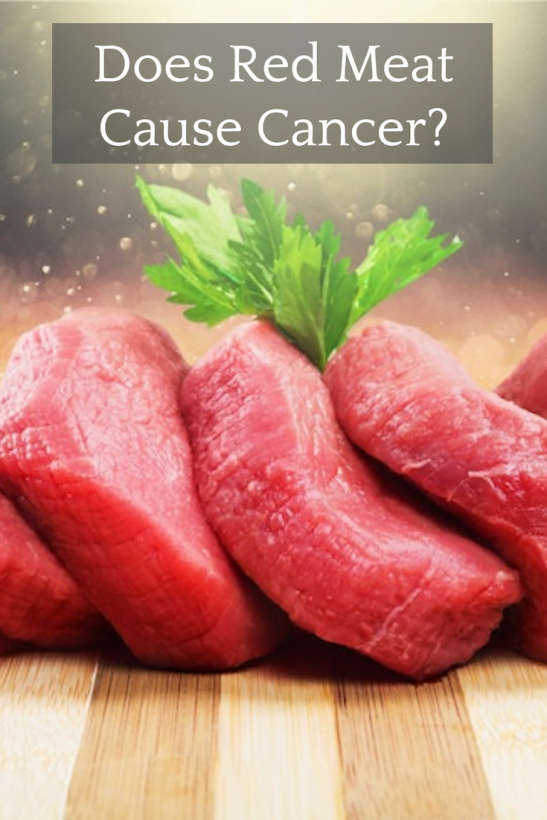
How to make sure red meat doesn’t cause cancer:
I recently came across a tidbit of information in an amazing book called Paleo Principles by Dr. Sarah Ballentyne that blew my mind! Your steak or pot roast or prime rib, could actually cause cancer even if it is pasture-raised from start to finish, unless you consume vegetables with your meal! Specifically, green vegetables. So whip up a side of sautéed spinach, roast some Brussels sprouts, or have a green salad to start. So simple! If you want a simple explanation of the science behind it, read on. If you want a more in depth look at the science, pick up a copy of Dr. Ballentyne’s book!
Preventing red meat from causing cancer:
There are several mechanisms linking cancer to “components of meat that have nothing to do with an animal’s diet or antibiotic exposure.” One important one is “heat-induced mutagens (a substance that can cause genetic mutation, which increases the risk of cancer).” However, taking a closer look at these studies “we find something interesting. The link between meat and cancer tends to disappear once the studies adjust for vegetable intake” (Ballentyne). This is amazing news. The big game changer seems to be chlorophyll.
How chlorophyll can protect you:
Red meat contains heme (this is why it is such a good source of iron). Unfortunately, heme can become a problem once in the gut. “The cells lining the digestive tract metabolize it into cytotoxic compounds (meaning toxic to living cells), which can then damage the gut barrier…cause cell proliferation, and increase fecal water toxicity–all of which raise cancer risk” (Ballentyne).
Chlorophyll, as you may remember from science in elementary school, is the pigment in green plants. Whether it is spinach, broccoli, or an algae, chlorophyll gives them their green color. Why is chlorophyll so powerful? It neutralizes those cytotoxic compounds caused by heme that we talked about above. Yay!
Another important consideration: Your microbiome
If you have read my post on Protecting Your Microbiome, you may already take steps to keep your microbiome and yourself healthy. Here it comes into play in the digestion of your red meat! Red meat contains the amino acid L-carnitine. Consuming L-carnitine causes some of our intestinal bacteria to metabolize it into a compound called trimethylamine (TMA). “TMA enters the blood stream and gets oxidized by the liver into yet another compound, trimethylamine-N-oxide (TMAO).” This substance “is strongly linked to cancer and heart disease , possibly due to promoting inflammation and altering cholesterol transport.” Oh dear! Don’t despair though. There is another simple solution! You just need the right type of bacteria in your gut.
Researchers found that those with a higher percentage of Bacteriodes rather than Prevotella “saw dramatically less conversion to TMA and TMAO! How do you get more Bacteriodes and fewer Prevotella? Eat fewer grains. Prevotella likes to eat grains. If you are feeding your body a steady diet of grains, then you probably have more Prevotella that someone who eats a lot of vegetables and fruits instead.
The big takeaway:
If we take all this information and boil it down to the essentials, here we have a few guidelines for consuming red meat.
- First, choose meat that has been pasture-raised from start to finish (grass-fed and grass-finished).
- Next, consume green veggies with your red meat. Try this recipe for Grass-fed Flat Iron Steak with Chimichurri Sauce. The Chimichurri Sauce is loaded with chlorophyll!
- Lastly, if you have a diet high in grains, you may want to cut back. Also, if you consume grains, make sure that they are not refined and that your grains are properly prepared, like sourdough bread or soaked oatmeal.
- Enjoy your red meat!
Do you eat red meat? Do you choose pasture raised? What do you eat with your meat?

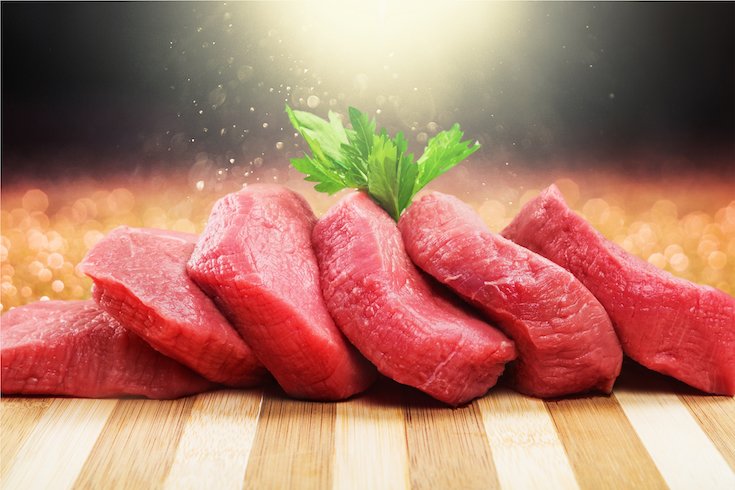



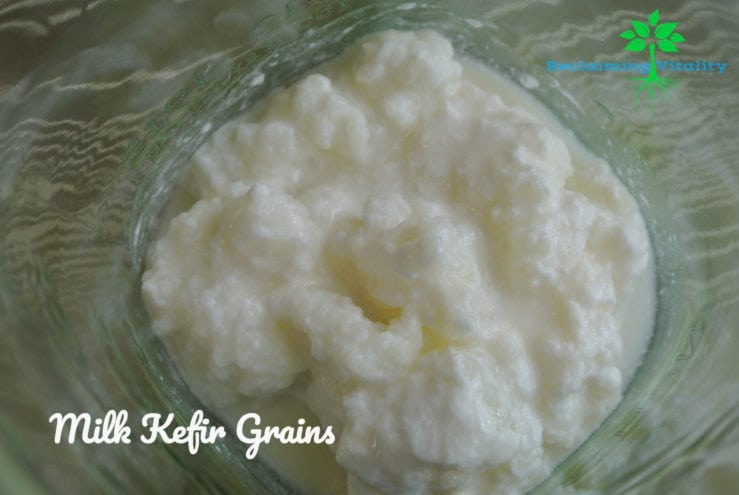







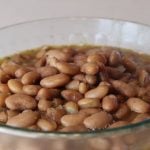


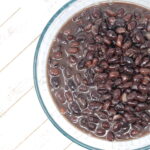

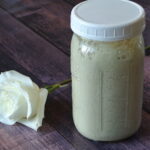

What an interesting article. I’ve always been a fan of grass fed and finished meat, but hadn’t heard the bit about eating chlorophyll with it. Makes total sense and will give it a try!
Wow! Great info – thanks for sharing!
We already eat local, organic, grass-fed beef… But now I will make sure I include green veggies in all the meals! Maybe this will help me motivate the hubs to eat more greens, too!
I also need to start soaking our grains… that is something I just haven’t started yet! Do you have any tips for getting started with soaking grains, then how to store and use them?
Hi Emily!
Glad you liked the post! As far as soaking grains, I mostly do sourdough. In the fall and winter, I do a sourdough wheat and in the spring and summer a sourdough buckwheat. Sourdough is actually super simple once you get into the habit of feeding your starter. (I recommend starting with an established starter for reliability. If you know someone who has a starter, this is the best!) I make things like bread, muffins, biscuits, pie crusts, etc. with the active starter and our pancakes and waffles with the “discard” starter. I have posts on how to maintain your starters as well as recipes to use with both wheat and buckwheat starters. For things like rice, quinoa, or other grains or pseudograins that you might have with dinner, I just soak them in the morning so they are ready to cook by dinner time. Hope this helps! Let me know if you have any more questions. 🙂
Chelsea
I have never heard about this small adjustment you can make to your diet that can make a great difference to your health and body. I am going to look at the matter more in depth and try to implement the basics. It doesn’t seems too difficult though. Thanks for clear explanation.
Thank you for this informative article! I already eat grass fed beef but I had no idea about how chlorophyll plays a roll in neutralizing the harmful components. I will definitely be eating greens with my beef from now on!
This is great information, I had no idea that red meat should be eaten with green veggies. I’m on a green veggie kick right now so sounds like I’m heading in the right direction.
I am a flexitarian so I consume mostly plant based foods. However, when I do eat meat I consume organic and grass-fed meat. However, I didn’t know that it should be grass finished!!! I am so glad I read this article. Thanks so much for this post!